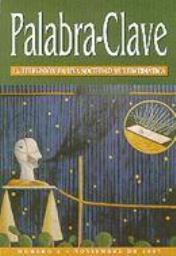Del plano a la esfera: libros e hipertextos
Resumo
In this article, the author points out the change observed in the perception of time, in daily life, in learning, in relation with mass media and in the dimension of aesthetics. Starting with the introduction of digital technologies in our public and private surroundings, the sense of time has changed. Since the late 80s, it is the speed which defines cultural scenary, zapping, clips, video games, spreadsheets, communication via fax, banking and e-mail. This transformation outlines the accelerated changes of the end of the twentieth century, and within its range of possibilities, it shapes and predicts the characteristics of next millennium. Time is the new quality of this syntax of objects in the end of this century. New technologies generate a different perception of time, unknown two decades ago. It is not only the emergence of more images but the speed by which they succeed themselves and hit each other stopping the differences between the spacially far and the spacially near. The author explains how these technological changes make special emphasis in the process that goes from reading in a linear way to a spherical reading of hipertexts and the impact of these new realities on the system of social and cultural perceptions of what is real. According to Sarlo, we are entering the technological threshold, which troubles both our old and new conceptions of reality and at the same time assures that virtual reality has involved imagination in a deep way.
Downloads
Downloads
Como Citar
Edição
Seção
Licença
1. Proposta de Política para Periódicos de Acesso Livre
Autores que publicam nesta revista concordam com os seguintes termos:
Esta revista e os seus artigos estão publicados com a licença Creative Commons Atribuição-NãoComercial-SemDerivações 4.0 Internacional (CC BY-NC-ND 4.0). Você tem o direito de compartilhar, copiar e redistribuir o material em qualquer suporte ou formato. Para que isto ocorra: você deve dar o crédito apropriado, prover um link para a licença e indicar se mudanças foram feitas; você não pode usar o material para fins comerciais; e, se você remixar, transformar ou criar a partir do material, você não pode distribuir o material modificado.





